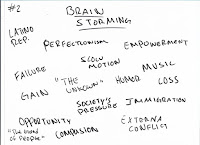After a lot of searching I think I finally have a story rough draft!
It's about lt a young kid who's running away from home with his parental figure... When he reaches the border, a coyote shoots his dad and kills him leaving the young kid to cross the border on his own. When he crosses he meets his uncle for the first time, he's uncle can't financially support him so he sends him off to live in California with his mom's childhood friend who takes him in sends him to study and gets him a job in the field (he's like 12). While he's working in the field he learns from Guadalupe's (the friend) cousin and the filed's owner takes pity on him, teaching him the grape/wine business. He grows up and continues to learn and care for the old man all while he faces violence in his school and is trying to discover who he is with his friends Luca and Andres. Guadalupe ends up dying of heart complications the day of his graduation ceremony, but she gets to tell him that she loved him like a son and that his mother would be very proud of who he has become...What he doesn't know is that the song his mother used to sing him when he was little is actually a VERY butchered rendition of a star-spangled banner, he sang that as Guadalupe was passing away... In the end, he comes to the realization that his mother had always intended for him to go to America in the search for the American dream... His mother used to say "look up at the stars, you can see them, yes, but you can hear them too... Listen..." That's where the title "The song of the stars" comes from also symbolic because of the iconic song "STAR spangled banner" which is the U.S's national anthem; truly, this film is a coming of age story about a young immigrant chasing the American dream while he struggles to find self-worth because of his rough past. Eventhough it's still a rough draft, I really like this story, it allows me to symbolically represent important social & personal topics while using a narrative that paints imigrant's reality.



















